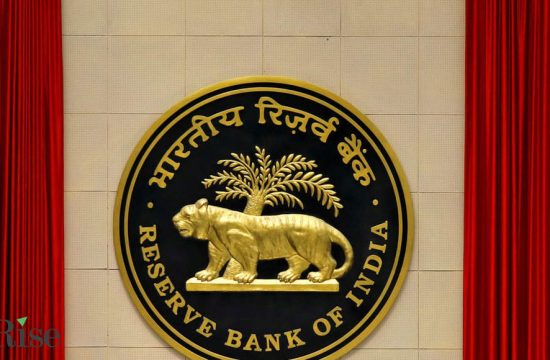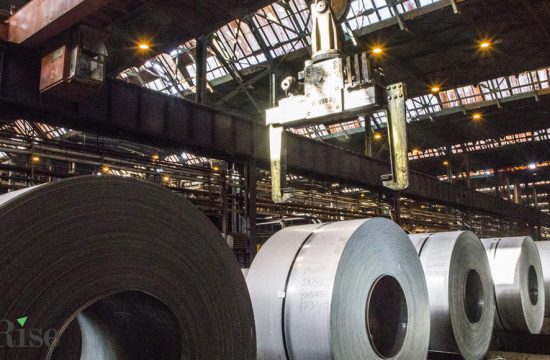There is hardly any sector that has escaped the economic brunt of COVID-19. A bright spot for the country till the pandemic began, the Fintech sector is now reeling under the impact of the virus. With fear of rising NPAs and uncertain demand, Sameer Aggarwal, the Founder & CEO, RevFin says the sector will now need to reinvent itself. For RevFin, this means focusing on the nascent EV sector in the country. Edited excerpts.
Economic Times Digital (ET): What changes did you witness in Fintech lending space and what are you planning for RevFin post-COVID-19?
Sameer Aggarwal (SA): Like most industries, the lending sector has seen a decline in demand. A reduction in demand has a direct impact on the Fintech sector. For those involved in lending, it impacts new business growth. For those involved in providing services to the lending industry like digital KYC, data and analytics face a huge reduction in need for their services.
Several firms have closed their operations, and many laid off staff, especially contract staff.
The other major issue is the reduction in loan installment payments. A reduction in loan payments means a shortage is cash flow and a very cautious outlook from lenders on new loan origination. Most lending companies have stopped new lending. The Fintech sector dependent on banks and NBFCs for lending capital and for providing services are facing severe pressure. This is likely to continue for the next few months.
At RevFin, we have taken an optimistic view of the situation. We expect several opportunities to emerge as the effect of the pandemic settles and are expanding our loan products to diversify into new segments like salary-backed employer loans. We are also entering into new partnerships with electric two and three-wheeler OEMs to finance their products. Lastly, we are aggressively building up our technology and operations capability to bring more innovative propositions to our customers.
ET: Highlight the significant trends that you foresee in the digital lending space during the pandemic.
SA: The biggest change that will be witnessed is acceleration in the pace of digital adoption in the lending industry. Most lending companies will look to build in-house technology and data capabilities.
Since the current events are unprecedented, assessing future cash flows of individuals and businesses will not be easy and short-term loans will pose significant risk. Loan demand will rise with loss of revenues for businesses and job loss for individuals, hence, the main issue for the sector will be how to underwrite the leads effectively.
Collections, including capital deployed and interests accrued, will be under tremendous pressure which will severely reduce cash flows, leading to very less or no money to pay salaries, bills or make new loan disbursements. The backlog of loan installments will take 6-12 months to get back on track. Many people and businesses will not be able to pay back loans, leading to NPAs.

Sameer Aggarwal, the Founder & CEO, RevFin
Many Fintech companies rely on tie ups with banks and NBFCs for lending and in most cases even guarantee a portion of the loan. In the event of losses on loans, such Fintech lenders will lose their capital and eventually the tie-ups will end. Banks/NBFCs will face their own existential crisis, with many of them opting to reduce lending through the Fintech sector, especially because most Fintech players operate in niche underserved segments which are higher risk segments which are being severely impacted as the spread of virus continues unabated.
With this crisis, most investors will shy away from this sector, because the recovery cycle will be long, and several business models will no longer be seen as viable and sustainable. Fintechs will have to prove the efficacy of their business models all over again, especially their ability to underwrite and collect effectively, before funding resumes in the sector.
The Fintech sector will need to reinvent itself through more innovative solutions and partner with lenders to help them build better underwriting and collections tools.
ET: You have been financing the EV sector for a while. Will the demand for EVs increase post-COVID-19?
SA: There is already a big buzz that the EV sector is going to see an explosion of demand for two and three wheelers. This demand will be driven by first/last mile connectivity and hyper local deliveries in Tier 2 and 3 towns. Electric vehicles are already very popular in small towns where average daily travel is below 70kms. As more migrants return to their home towns and people become conscious about venturing out, home deliveries will start becoming a reality in small towns.
ET: How many loans have you disbursed in tier 2 & 3 cities before COVID-19?
SA: We have disbursed over 1,000 loans in 25 small towns across UP, Bihar, Punjab, Haryana, Rajasthan and West Bengal.
ET: You have been vocal about using EV operators in smaller cities and towns for hyperlocal deliveries. What is your idea?
SA: The concept of home deliveries is almost nonexistent in most small towns in India. In fact, deliveries from most e-commerce companies also do not get home delivered; the recipient has to pick up the delivery from town centres. Now, with the pandemic and thrust by e-commerce players to bring small local shops under digital platforms, home deliveries will become a reality.
In small towns where distances are less, it makes economic sense to use electric vehicles. The cost of purchasing is cheaper or similar to ICE based vehicles and the cost of running is much lower. Charging infrastructure is also irrelevant, as electric two and three wheelers can easily be charged at home. In many rural parts of India, electrification is also very cheap or even free, thus further reducing running cost.
Government policy push towards usage of electric vehicles for pollution (air and noise) reduction has also found good acceptance amongst e-commerce companies, fleet owners and aggregators.
A combination of demand for home deliveries, availability of labour (especially migrants returning), lost cost of ownership, policy push and environmental consciousness will help the EV sector establish clear inroads in hyper local deliveries.
ET: Do you think Fintech can strengthen the EV sector in India?
SA: Fintech sector can help scale the small commercial EV sector by 20X. The biggest constraint of the EV sector is availability of finance. Most banks and NBFCs have stayed away from this segment as customers are very difficult to underwrite, market is unstructured and fragmented, products are not standardised and secondary sales market is not established.
Through use of technology, the Fintech sector can overcome all the above challenges. Use of non-traditional data coupled with machine learning based algorithms can solve the challenge of underwriting. Use of digital platforms reduces the need for human interaction to cover fragmented geographical distribution. Partnerships with OEMs, Insurance providers and IOT providers can bring structure and scale to the market. Once there is scale, the secondary market will automatically develop. All of this relies on effective use of technology and data, which Fintechs can provide to lenders for active participation in the space.
ET: How has RevFin been impacted by COVID-19?
SA: The immediate impact for RevFin has been a reduction in loan installment collection. This has reduced our cash inflow while outflows continue as normal.
With the end of moratorium on loan repayments, we expect to see an increase in delinquencies as the impact of the lockdown is still being felt and our customers are still not earning to full potential.
We remain optimistic and have expanded our team during the pandemic with no layoffs. We are also aggressively building our technology capabilities as we see a huge upsurge in demand in the EV space. RevFin has also entered into several long-term scalable partnerships in the EV space during the pandemic.










